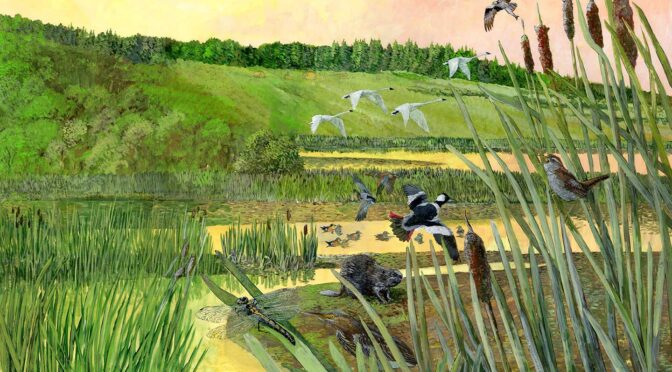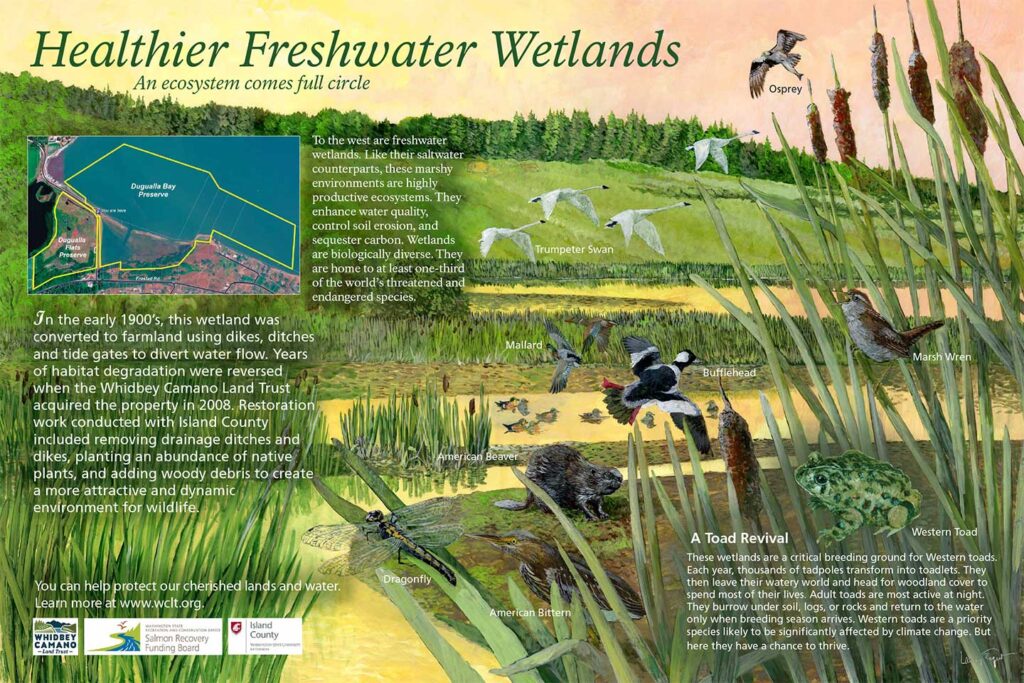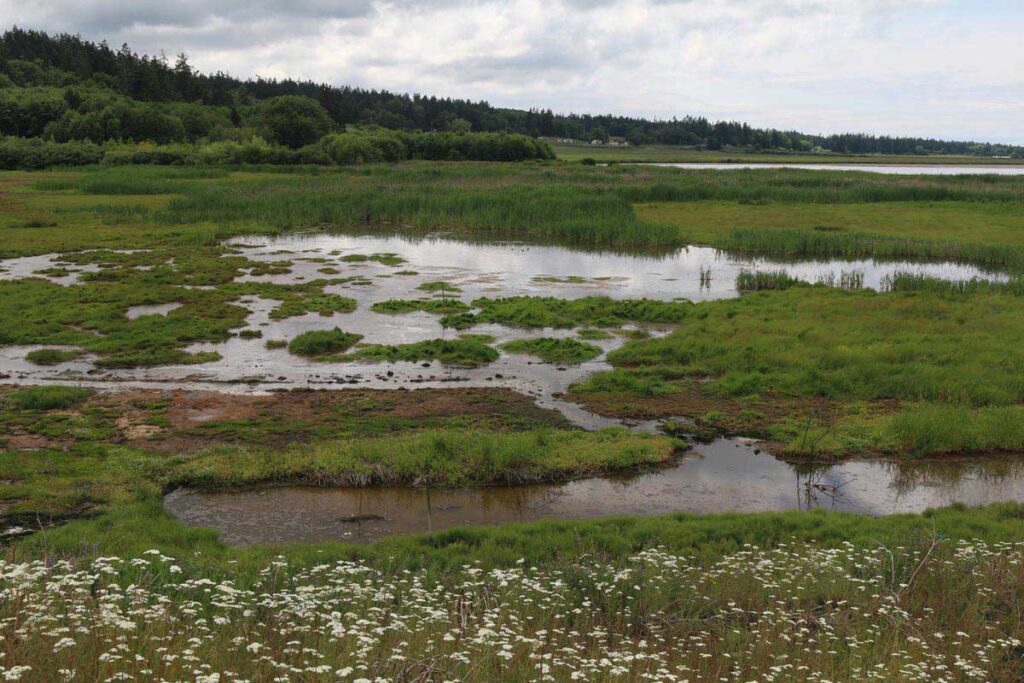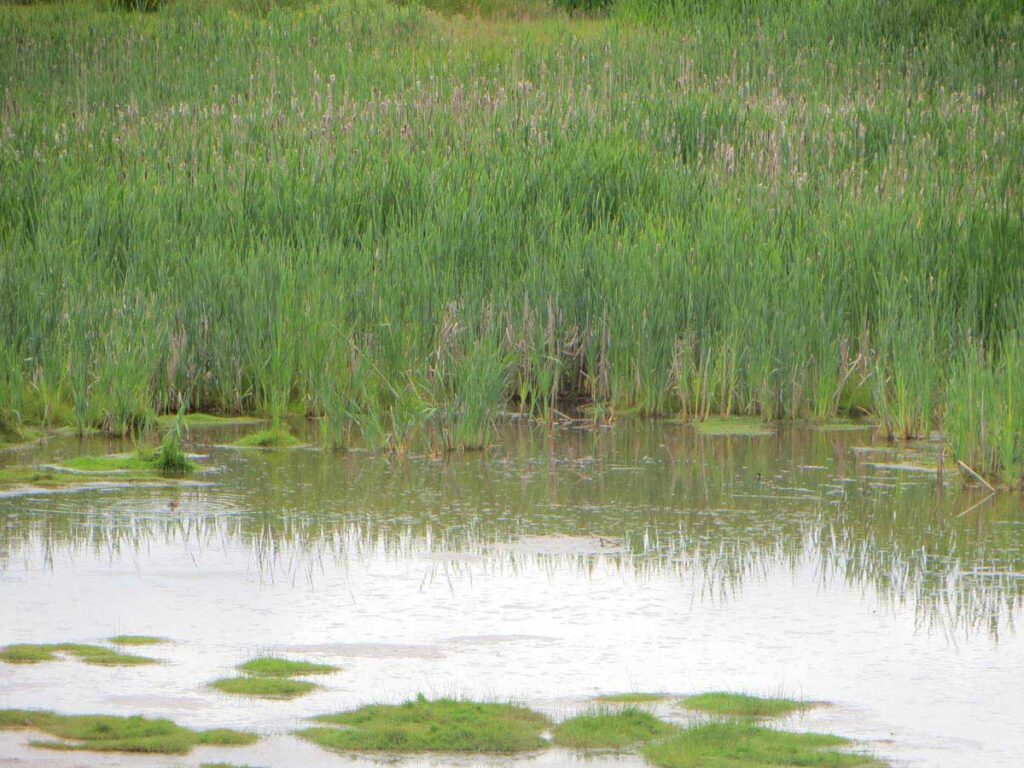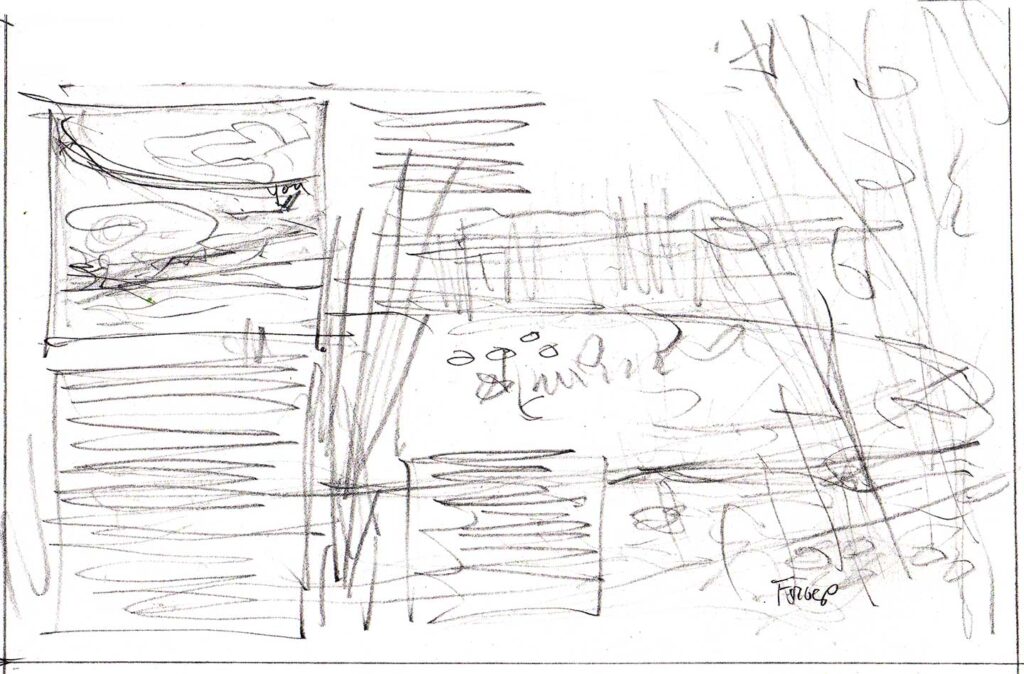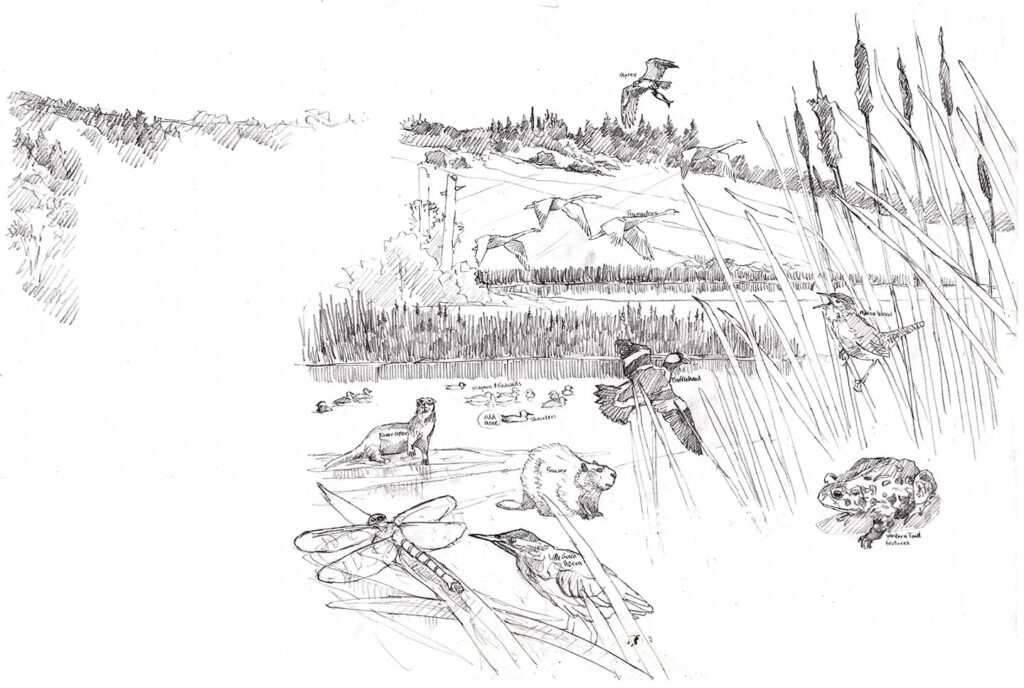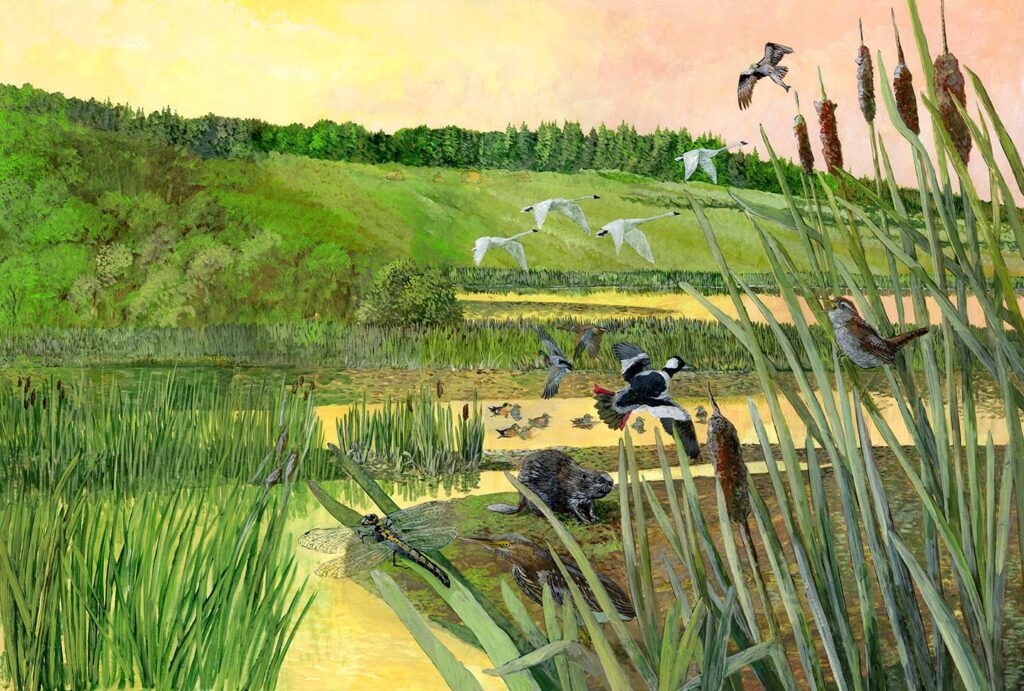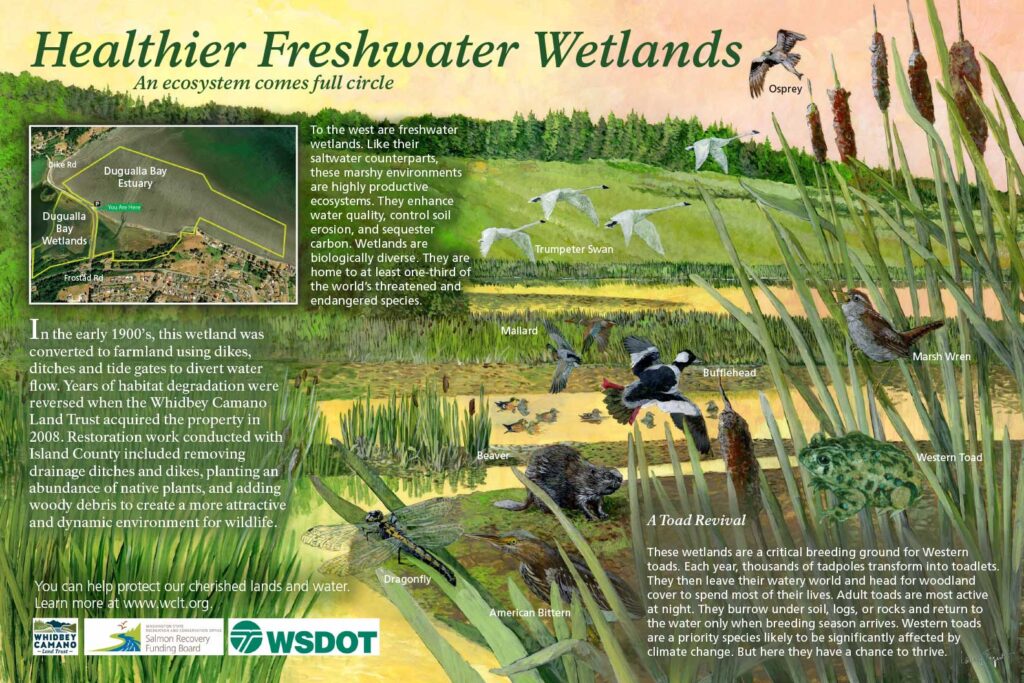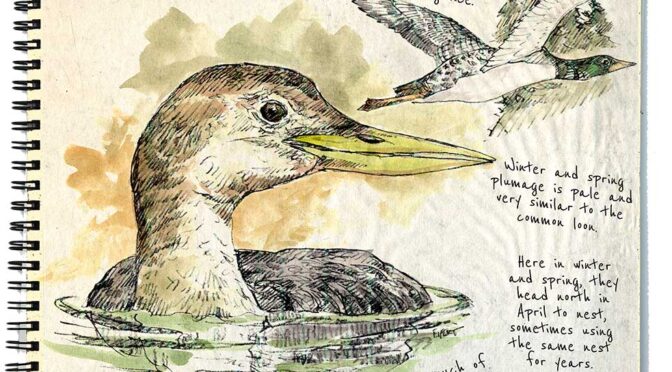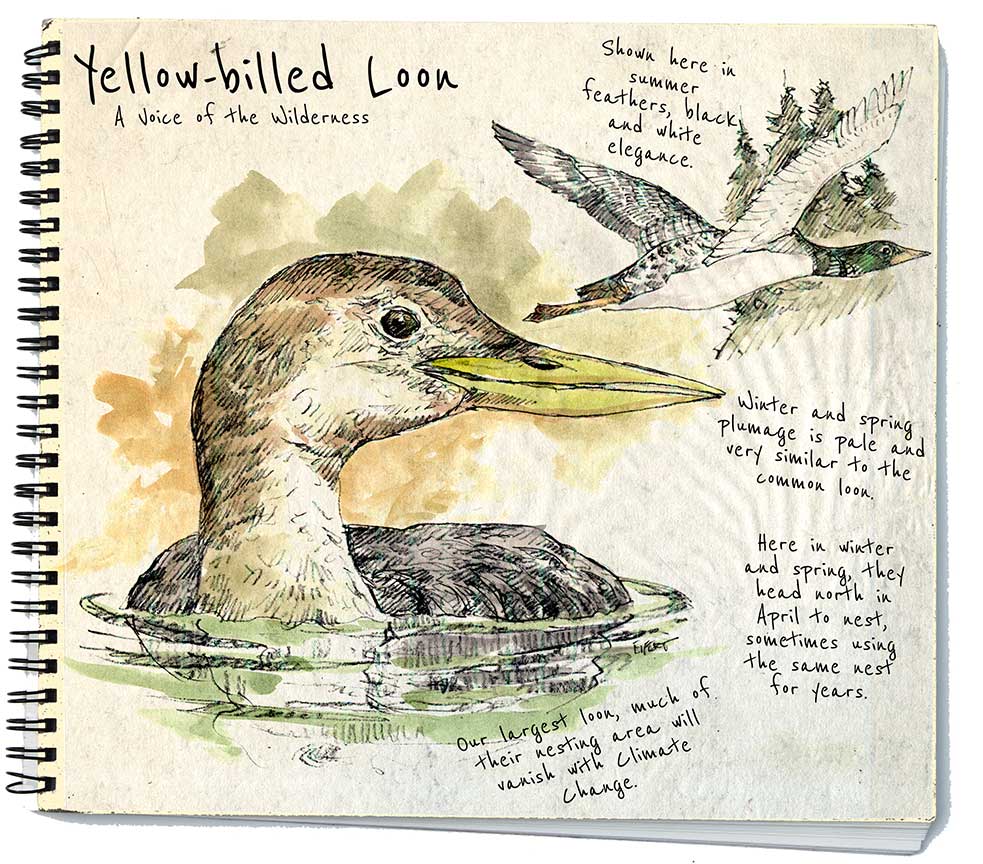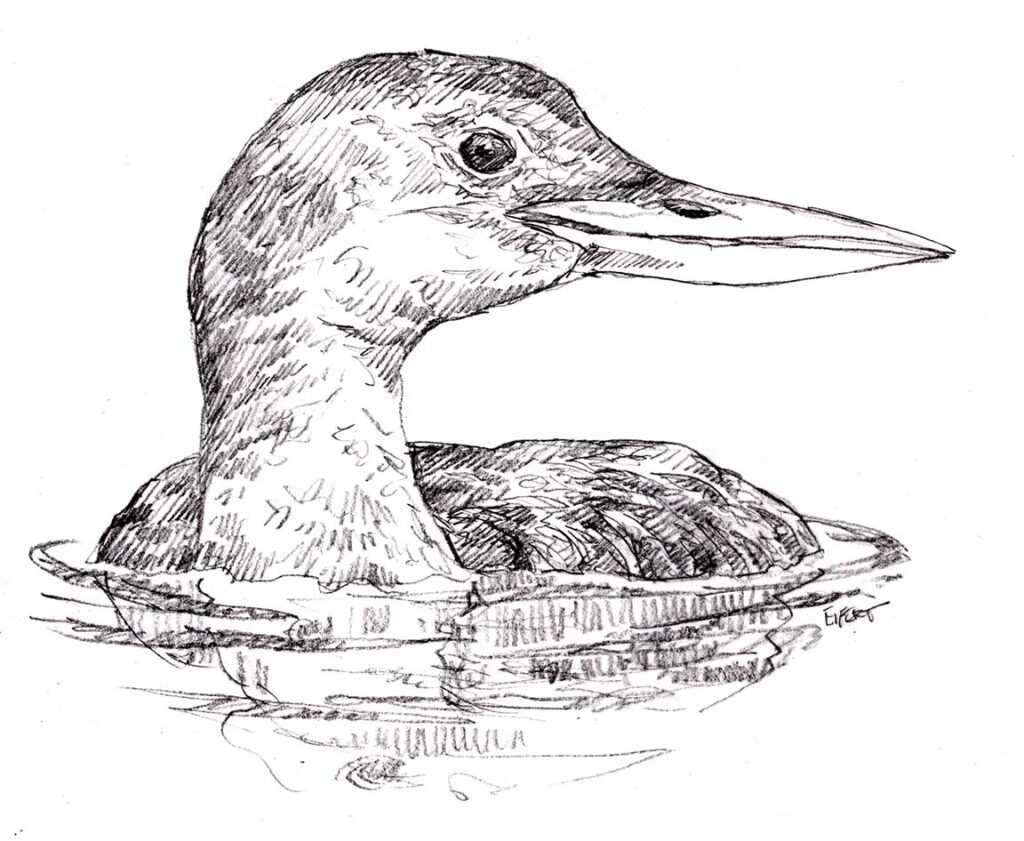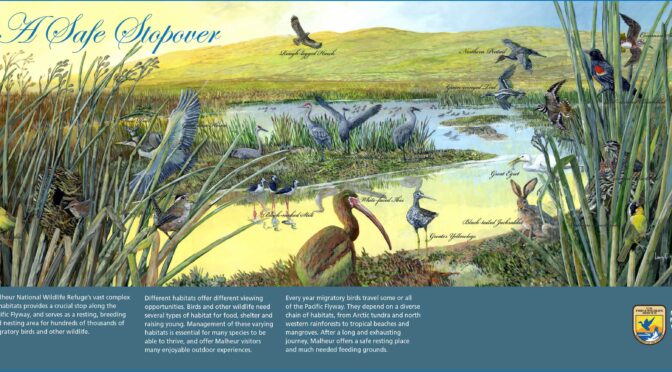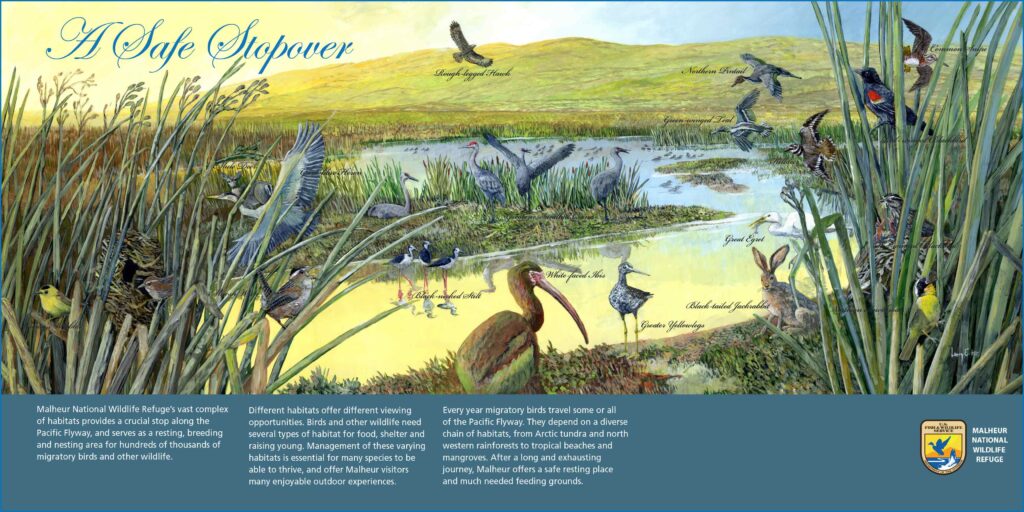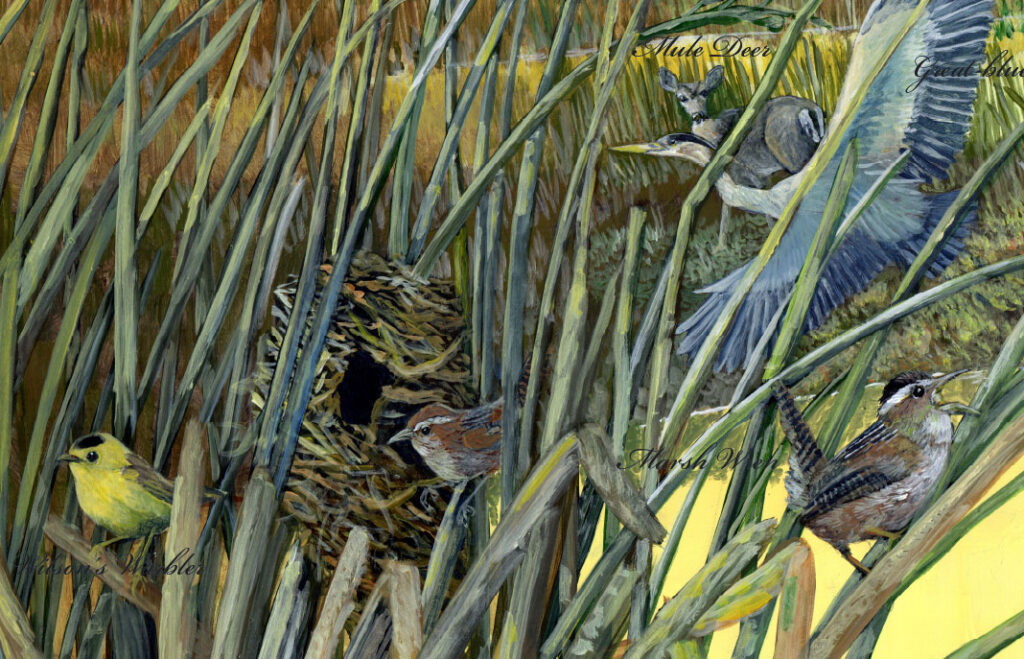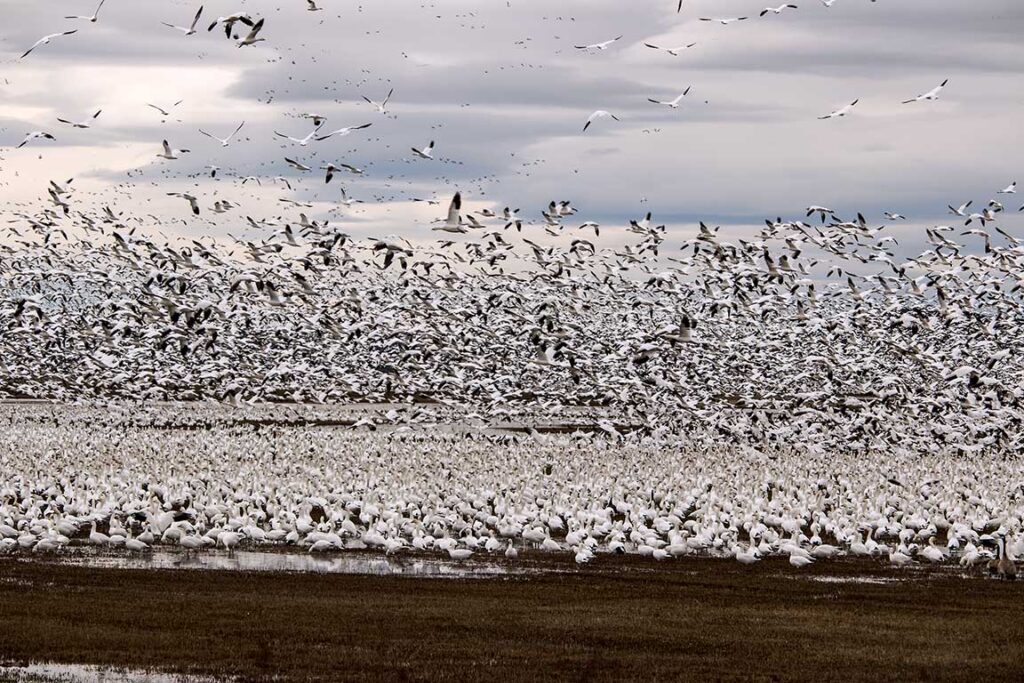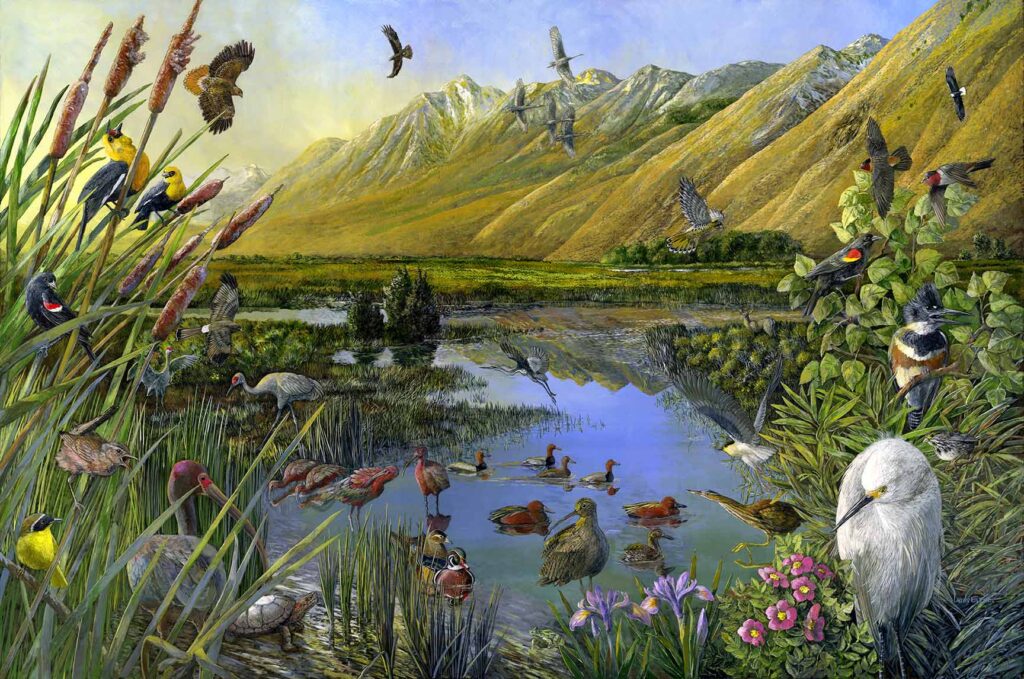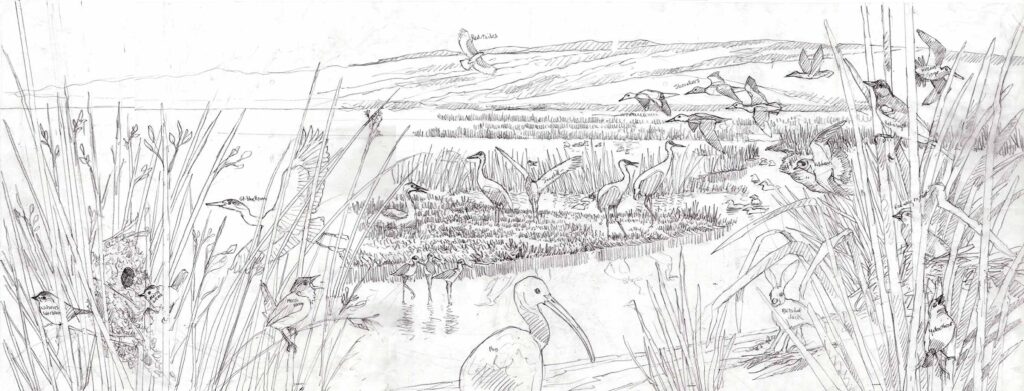Just finishing up two new paintings for outdoor wayside exhibits at Whitbey Island’s Dugualla Bay Preserve. This is another project for the Whidbey Camano Island Land Trust and, as always, it was a pleasure to paint for them.
This recently restored wetland is on both sides of a dike road a few miles north of Oak Bay. One side is fresh water, the other is a salt marsh salmon habitat area. First it was bay, then farmland with nature shut out. Now it’s back to nature. The bay side is very good forage fish and salmon habitat.
This first painting is the freshwater side, a rich habitat of cattails and critters from western toads to trumpeter swan – and I can’t say I’ve ever painted THOSE two in one painting before! The wetlands have water levels that rise and fall with the seasons and on a site visit a few months ago I took some reference shots, not very good as you can see, but somehow I built an interesting painting with what I had.
I started with a quick gesture drawing, a concept sketch showing cattails on the right, map and text on the left, maybe wildlife in the center. It’s sort of amazing to me that the final painting was very close to this.
Then a more refined drawing came with a better understanding how the wildlife fits in, getting their sizes and spatial separations set for a good piece of art. The toad couldn’t be down with the rest of them in the marsh since they’re up in the drier meadows, so I just floated it in midair – a toady blimp.
And this is how the final painting looks. Click on it to enlarge in your browser. These things are certainly not just a nice painting like my days of gallery painting. It takes a bunch of planning to get the other components to all fit.
It all came together with the text, a map I did in Illustrator using the National Park Service’s map software – and the text the Land Trust supplied me. Very skilled efforts go into doing text for these panels and these are really well written. Too many words it becomes a ‘book on a stick’ and no one reads it. Too few words and no one learns anything. And this type of art is all about learning something – which I hope you did with this blog. I hope you liked it.
Thanks for reading this week.
Larry Eifert
Here’s my Facebook fan page. I post lots of other stuff there.
Click here to go to our main website – with jigsaw puzzles, prints, interpretive portfolios and lots of other stuff.
Nancy’s web portfolio of stunning photography and paintings
And here to go to Virginia Eifert’s website.
